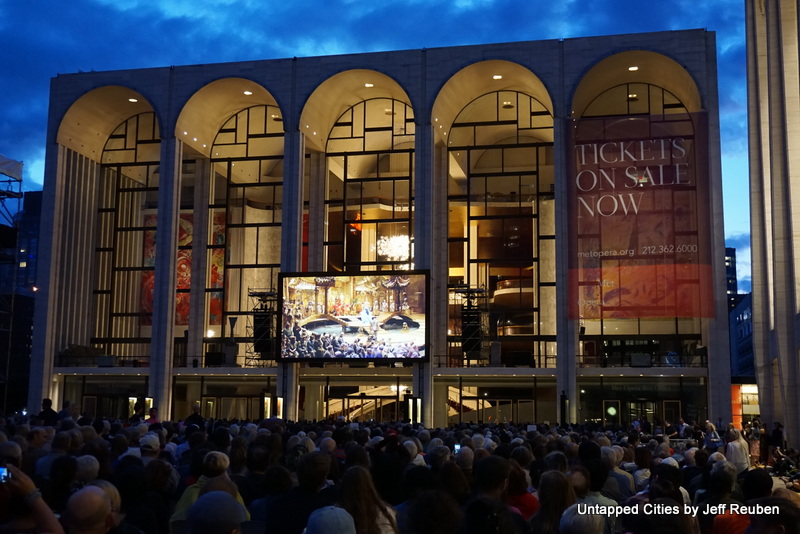5. Lincoln Center

Designed by a posse of big name architects (Abramovitz, Belluschi, Bunshaft, Harrison, Johnson, Saarinen), when Lincoln Center opened in stages during the 1960s, many reviewers had a love-hate relationship with it. “It is not a disaster’ concluded both New York Times architecture critic Ada Louise Huxtable and art curator Charles W. Millard in separate appraisals. Positives: “elegant scale, color and surface” (Huxtable) and “at night Lincoln Center is an enchanting hive of activity” (Millard). Negatives: “the architecture sets no high water mark for the city” (Huxtable) due in part to a plan “isolating it from the surrounding neighborhood” (Millard).
In a similar vein, Progressive Architecture declared the Library-Museum building a “modern gem” though with a problematic interior where “masses of people and book jackets somewhat dissipate that disaster.” And let us not forget that Lincoln Center was born of a massive urban renewal that demolished a lively jazz neighborhood, part of Robert Moses’ seemingly unending slum clearance proposals to cut through swaths of New York City in the name of progress.
That ambivalence proved prescient. Lincoln Center succeeded despite a litany of problems, which have been eased by various correctives over the years, investments justified by its enduring popularity as a cultural hub.





